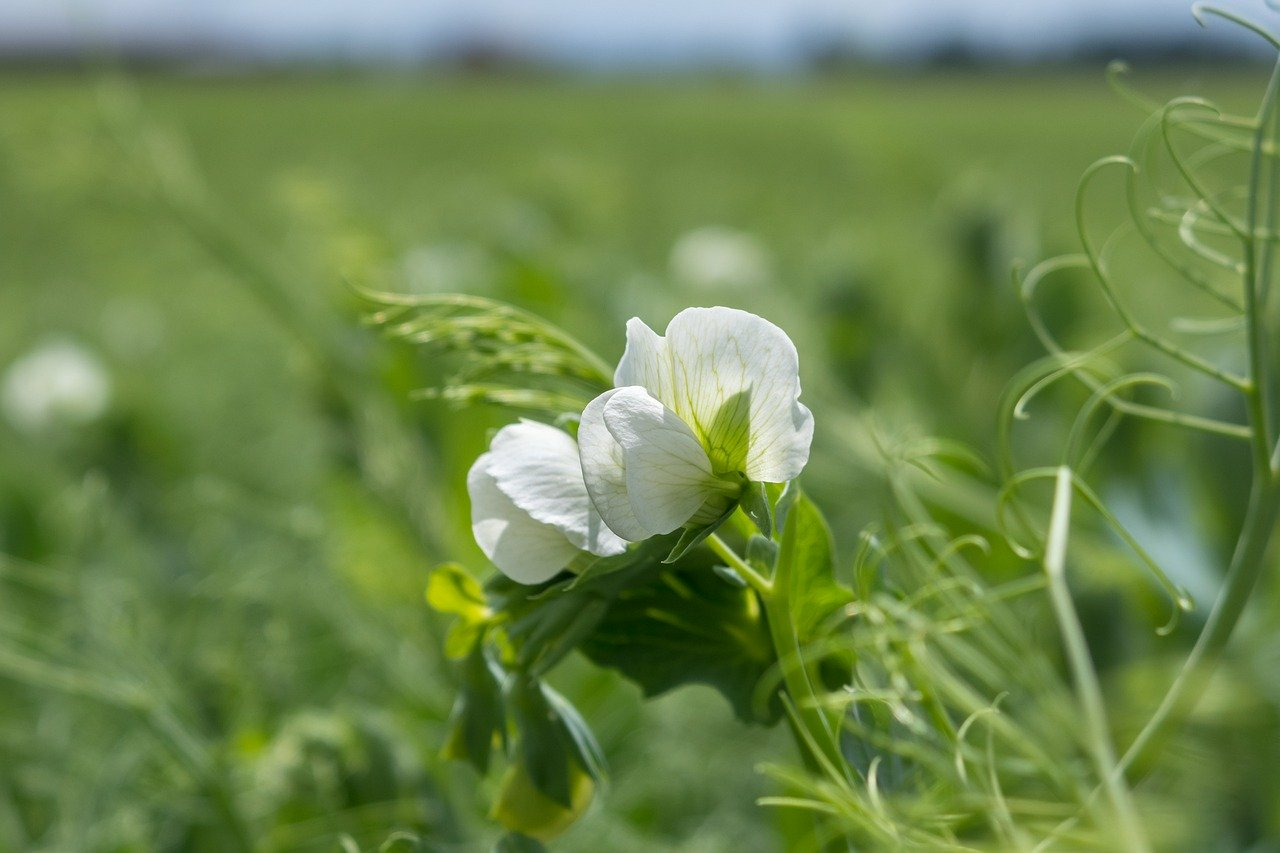
Planting Peas: Tips on Sowing, Care and Harvesting
In addition to the harvest, pea plants bring many other benefits to your garden. As legumes, they are also often used as green manure. In this article, you will learn how to sow peas, which pea varieties are available and how to harvest peas. There are also tips on how to properly care for pea plants to keep them healthy. We also introduce you to typical pea diseases and pests such as powdery mildew.
This Article Contains:
- The Pea Plant: What You Need to Know
- What Are Legumes?
- Sowing and Planting Peas: Location & Soil
- Peas in a Raised Bed or on the Balcony
- Mixed Cultivation With Peas: Your Example Planting Plans
- Pea Varieties - Marrowfat Peas & Co
- Caring for the Pea Plant
- Pea Pests: Pea Weevils & Pea Moths
- Plant Diseases: Powdery Mildew on Peas
- Frequently Asked Questions About Planting Peas
Quick Overview
The Pea Plant at a Glance
- Light: sunny
- Nutrients: no additional (nitrogen) fertilization
- Water: even soil moisture
- Soil : loose, humus-rich
- Germination temperature: depends on variety, usually from 8 °C/46.4 °F
- Planting depth : 5 cm/1.9 in
- Planting distance: 3 - 5 cm/1.2 - 1.9 in
- Row spacing : 40 cm/15.7 in
The Pea Plant: What You Need to Know
Peas (Pisum sativum) belong to the legume family (Fabaceae) and are related to Beans, lupins and lentils. They are now grown almost everywhere in the world, but originally come from Asia.
Pea plants grow as annuals and are relatively fast-growing. They start to flower about two months after sowing. The pulses develop from the flowers and are harvested either fully ripe or still young, depending on the pea variety. You can then harvest them for around two to three weeks.
You can either Sow Legumes as Green Manure in your bed or add individual species such as peas to your vegetable patch. Due to the short cultivation period, peas are also ideal as a pre-crop or post-crop in a mixed crop. As legumes, they bring many benefits to your garden, both above and below ground. Peas also have a low nutrient requirement, which makes them a good intercropping partner with heavy feeders.
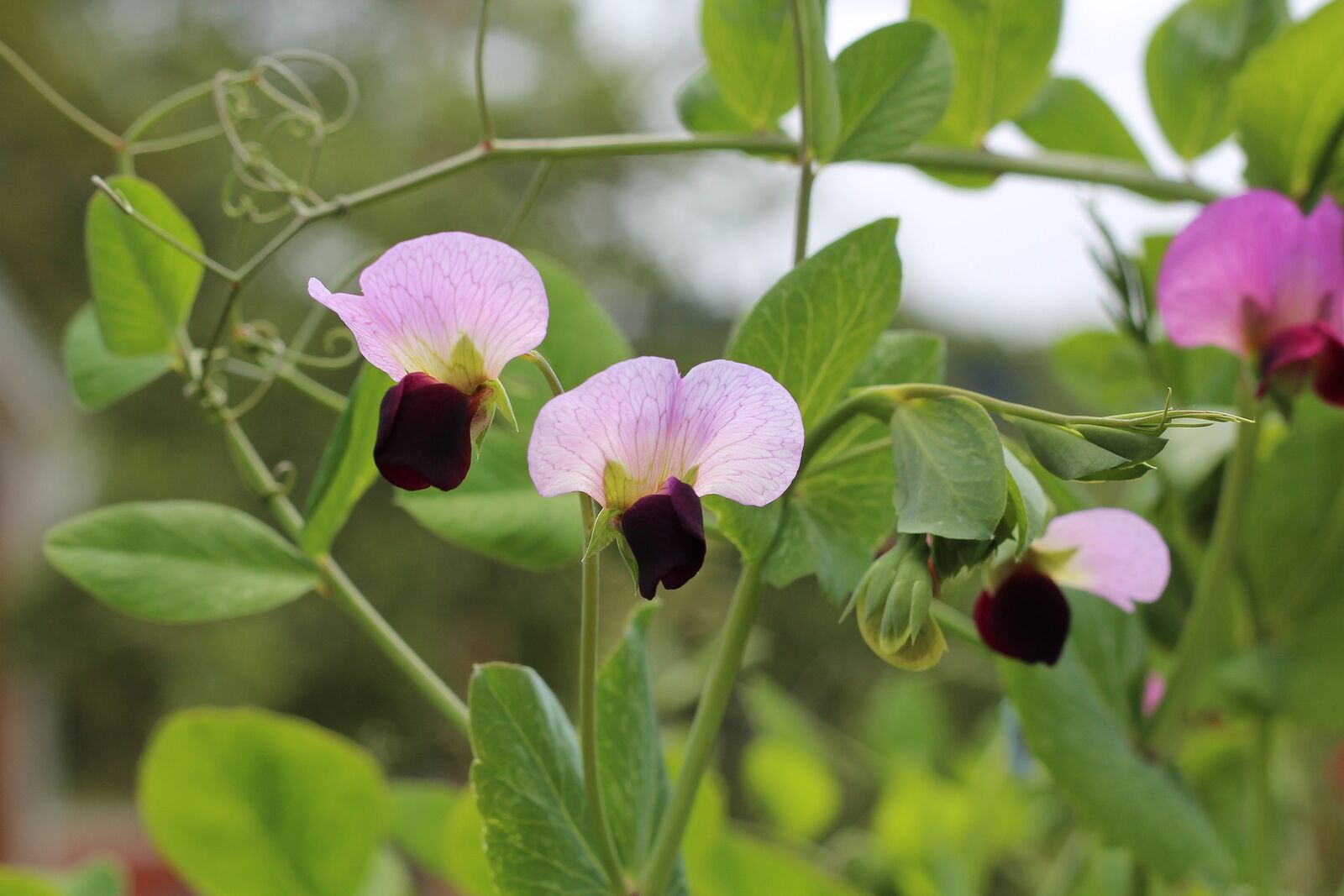
What Are Legumes?
Below ground, legumes have a positive effect on soil health. Most legumes have quite deep roots (e.g. beans and lupins) and therefore loosen the soil deeply. However, this does not apply to peas, as they tend to have shallow roots. Nevertheless, they fix nitrogen in the soil and thus enrich it with additional nutrients. Above ground, peas and legumes generally provide food for insects through their flowers.
Through symbiosis with so-called "nodule bacteria" (rhizobia) on the roots, nitrogen from the air becomes available to plants. However, the use of insecticides can greatly reduce the natural distribution of these bacteria. How much nitrogen is supplied depends on the plant species and the soil conditions (e.g. pH value). To ensure that the subsequent crops can actually use the nitrogen, you must either leave the roots in the soil or work the plant in completely.
Green Manure in the Garden: Using Nodule Bacteria
To ensure that the subsequent crops still benefit from the nutrient-rich environment, the roots with the nodule bacteria should remain in the soil. After harvesting, do not pull the plants out of the soil by the roots, but cut them off at the surface. If the remaining greenery is not infested with pests, it can be used as mulch or composted.

Sowing and Planting Peas: Location & Soil
Ideally, peas should grow in a location with a moderately moist, not too warm climate. You should not plant them in a shady spot in the bed. Locations with well-drained, airy soil that is calcareous to rich in lime and humus are suitable. Heavy loam and clay soils, as well as particularly wet or acidic soils are less suitable for peas.
You can read about When to Sow Peas and What You Need to Bear in Mind in this article. Here you can find tips on sowing and growing.
Peas in a Raised Bed or on the Balcony
Of course, you can also grow peas in a raised bed or pot on the balcony. Choose the sunniest spot possible and sow them directly into the bed or pot. Even in a small space, you can grow peas well and harvest them fresh. You also provide insects with food and a habitat. The procedure for sowing and tending is the same as in the garden. Sweet peas are very suitable for growing on the balcony, as you can harvest and enjoy fresh pods quickly and over a few weeks.
Mixed Cultivation With Peas: Your Example Planting Plans
Peas are perfect for planting in a mixed crop, allowing you to benefit from greater diversity in the bed and more resilient plants. We have prepared some examples for your mixed cultivation with peas.
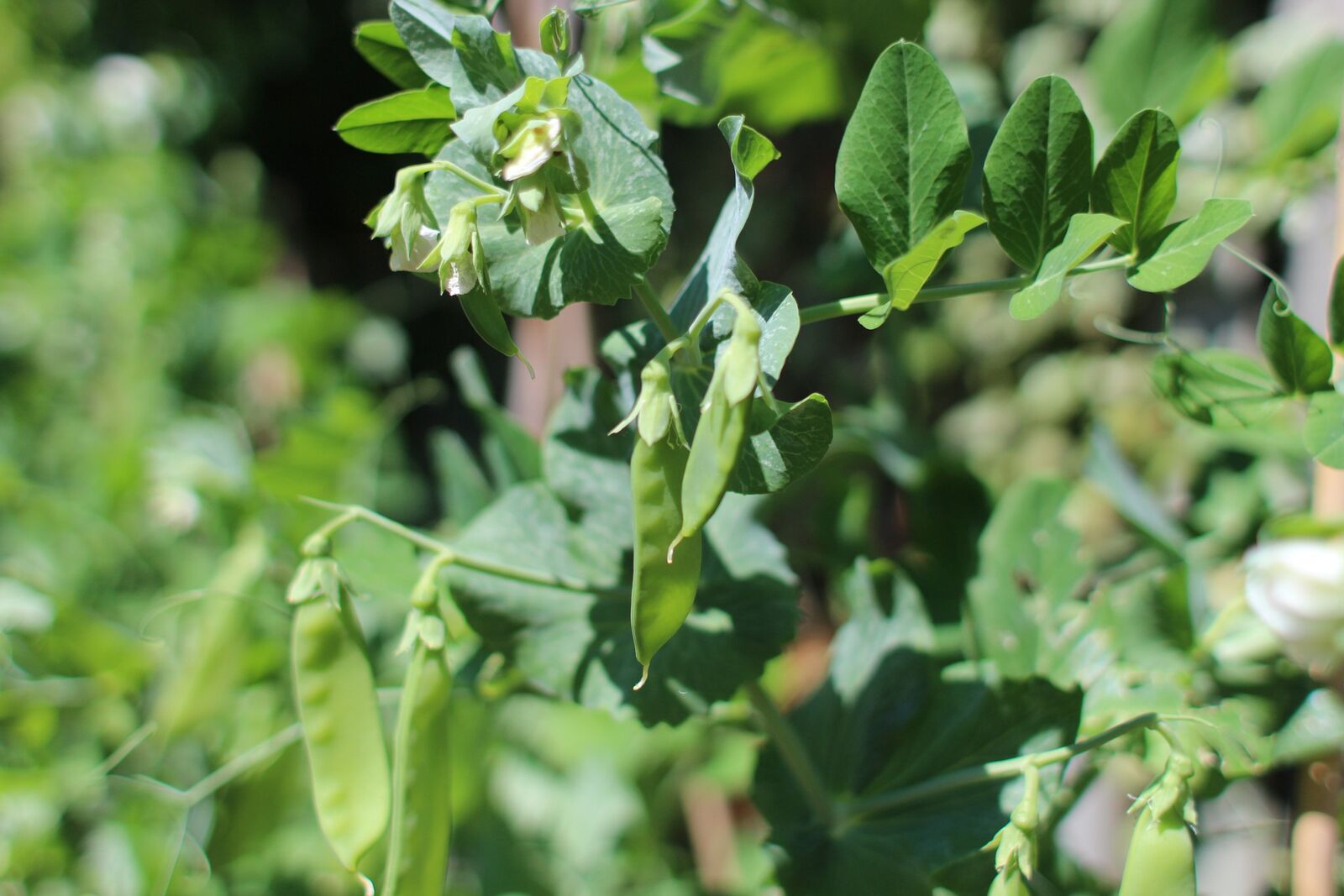
Pea Varieties - Marrowfat Peas & Co
A distinction is made between two basic forms, namely the garden pea (P. Sativum) and the fodder pea. The latter is not really important for growing vegetables in the garden, as it is grown as animal feed. To find out everything you need to know about Harvesting and Preserving the Diffrent Pea Varieties.
Finding the Right Pea Varieties
Within garden peas, there are marrowfat peas, sugar snap peas and pal/shell peas. These varieties differ in terms of consumption and shelf life. The decision as to which pea variety you want to grow therefore depends primarily on how you want to process the peas.
Sugar Snap Peas
Sugar snap peas (Pisum sativum convar. axiphium) do not require the laborious peeling of the seeds. They are particularly sweet and can be eaten raw or cooked together with the pod. They can also be harvested weekly over a few weeks. Proven varieties of sweet peas include "Ambrosia", "Early Henry" and"Norli".
Marrowfat Peas
Marrowfat peas (Pisum sativum convar. medullare) are classic peas that are also available frozen or canned in supermarkets, e.g. "Ambassador", "Wunder von Kelvedon", "Evita" and "Novelia". These peas are harvested when the peas are already formed. Like sweet peas, marrowfat peas can be harvested more often. Unfortunately, however, they do not keep for long and must be processed.
Shell Peas or Paler Peas
Shell peas or paler peas (Pisum sativum convar. sativum), e.g. "Kleine Rheinländerin" or "Rheinperle" form the third group of peas. They are particularly robust and can be sown as early as March. Shell peas are only harvested when the pods are dry and therefore have the longest shelf life.

Find Numerous Pea Varieties in Our Library
In our library you will find information on the individual varieties with cultivation periods, tips on planting and harvesting. You will also find good and bad neighbors to help you plan a mixed crop.
View the Library Now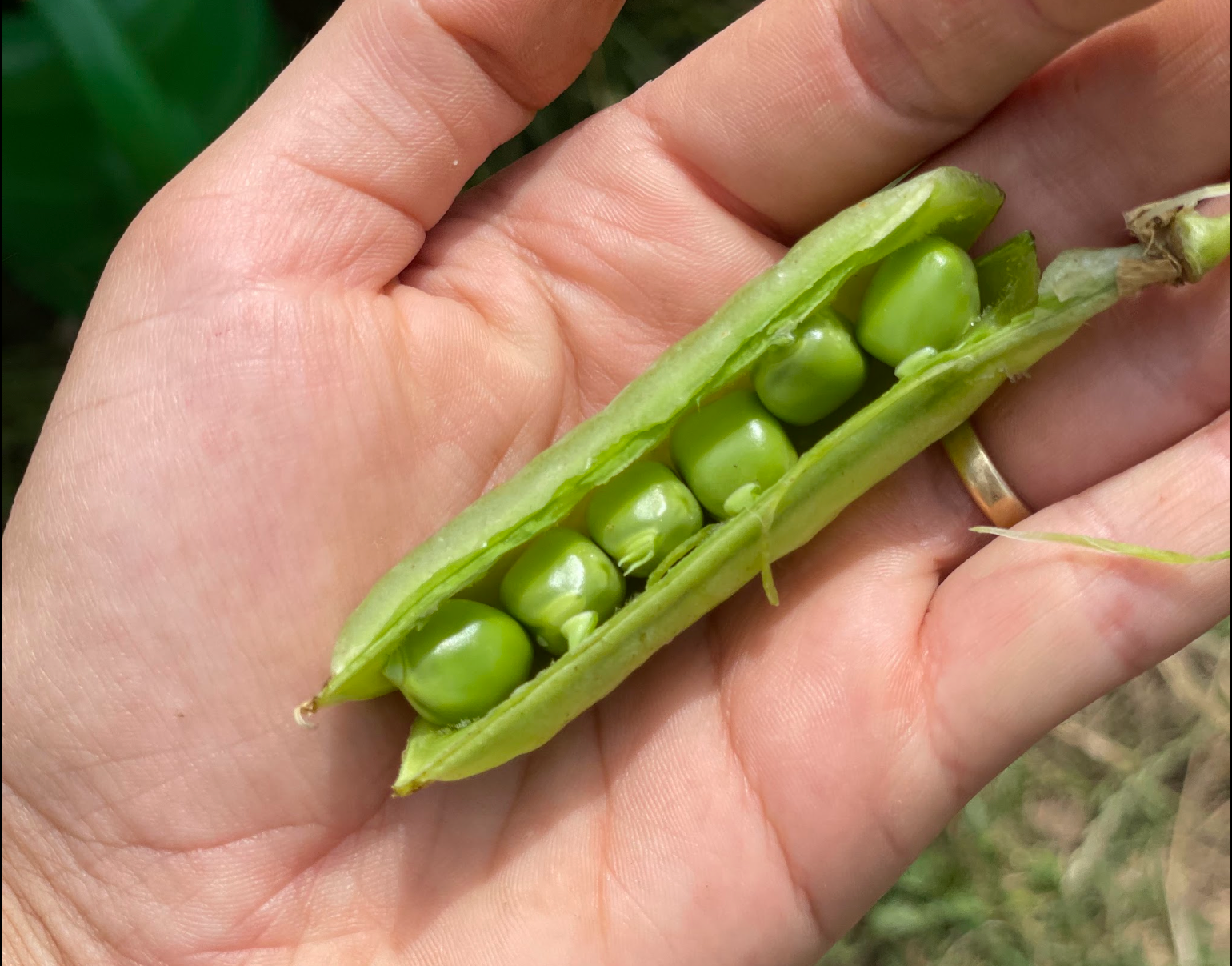
Caring for the Pea Plant
Trellis for Peas
After the seeds have sprouted, you should regularly loosen the soil with a hoe. In a no-dig bed, the soil structure is usually already quite good, so you can do without hoeing. As soon as the young pea plants have grown to the height of a hand, you should hill them up to increase their stability. Low varieties do not need climbing support, they support themselves (e.g."Kleine Rheinländerin"). From a height of around 50 cm/20 in, however, the plant needs a support, otherwise it will bend over. Taller varieties can be supported by wire mesh fences, for example. However, you can also easily make your own climbing support. To do this, stick a thicker twig into the soil at each end of the row and tie strings between them. Depending on the variety, the branches should be about one meter long. To grow in double rows, simply stick two branches crosswise into the ground and stretch straight strings between the crosses. As an alternative to the strings, you can also buy rabbit wire or a scissor mesh from the garden center and attach these to the branches.
Correct Watering and Fertilizing
Ensure that the soil is evenly moist during the growing season, especially when the flowers and pods are forming. A layer of mulch can help to protect the soil from drying out and maintain the airy soil structure. Apart from this, peas are relatively easy to care for.
They do not need a particularly fertilized bed. On the contrary: peas do not need any additional fertilization during the vegetation period, as they get their nitrogen from the symbiotic bacteria in the soil. Heavy nitrogen fertilization even makes them more susceptible to diseases and pests. If you have the opportunity, you can prepare the bed in the fall with some compost and mulch cover, which ensures an airy soil structure. If you want, you can sprinkle some rock flour on top. It contains mineral trace elements and makes the pea plants more resistant, while also having a positive effect on the soil quality.
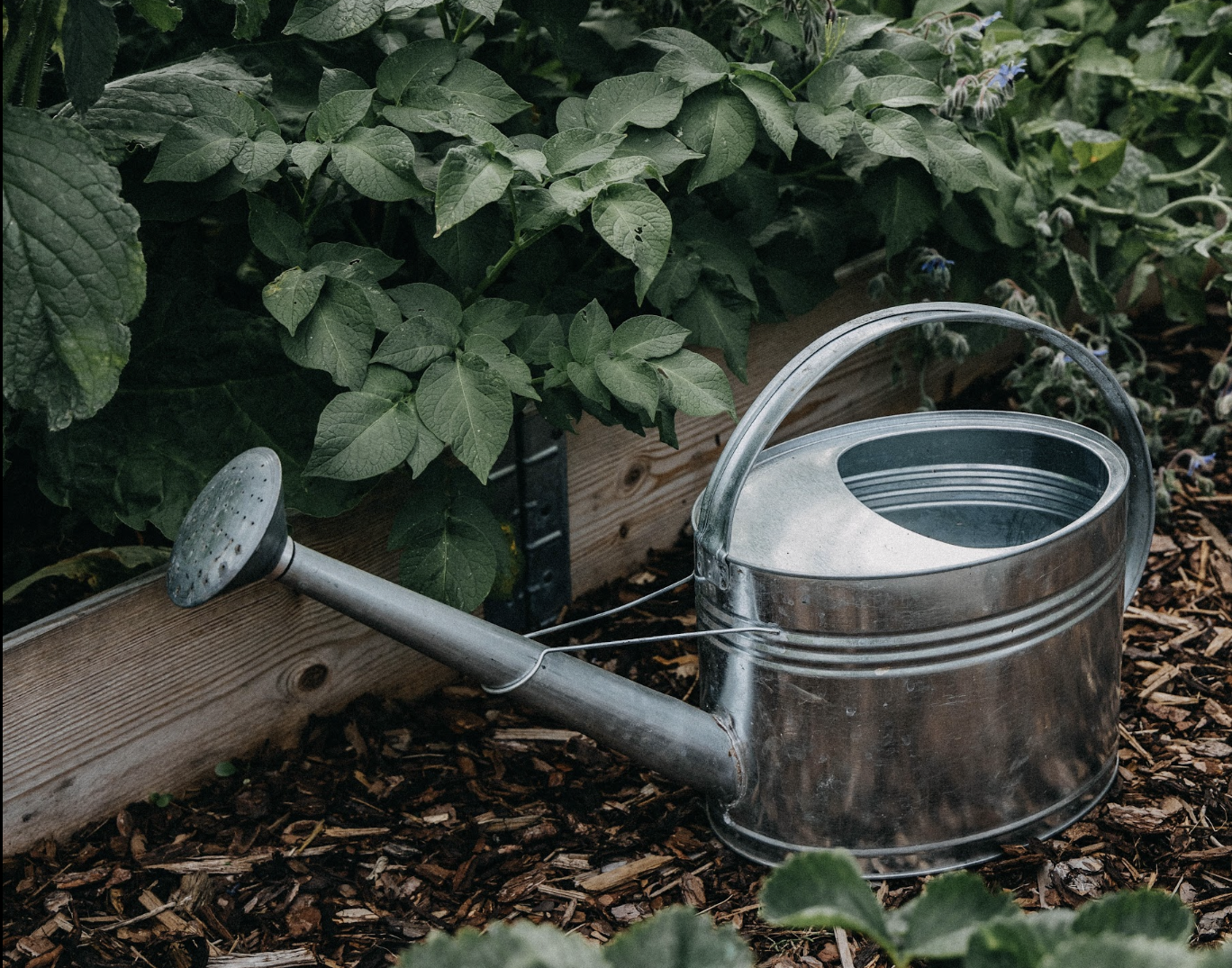
Pea Pests: Pea Weevils & Pea Moths
The Pea Beetle
Young plants are particularly susceptible to the pea weevil at the start of the season and during slow growth. Their presence is usually noticed by feeding damage to leaf edges. After overwintering in plant debris and vegetation, the pea weevils are attracted to your peas. They are gray-brown and lay their larvae in the soil. These in turn feed on the root nodules and then pupate until they hatch as adult insects in June and July. It helps against the pea weevil if you lay down fleece after sowing. Good soil preparation and not using vetches as green manure over the winter also protects pea plants from infestation.
The Pea Moth
The pea moth is a moth about eight millimetres in size that lays its eggs on the flowers in May and June. As soon as the larvae hatch, they eat their way through the pods and can cause enormous damage. The infestation is therefore often only noticed when you open the pods. You can prevent this by sowing early at the end of March/beginning of April or later in May. This way, the flowers and pods will not form during the moth's flight time. Alternatively, you can cover the plants with a fine-mesh crop protection net in May and June. Infested areas should be thoroughly dug up in winter.
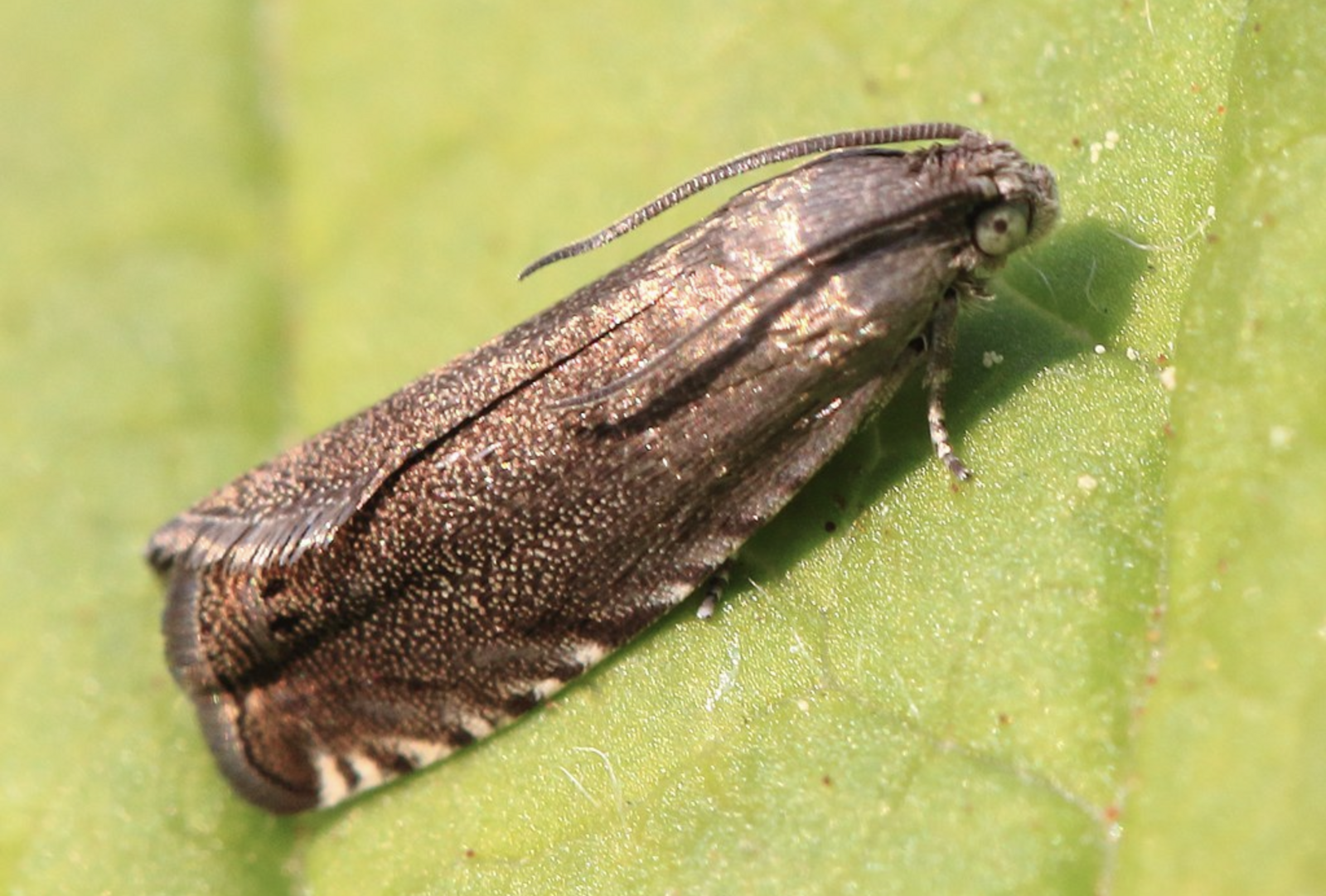
Plant Diseases: Powdery Mildew on Peas
Powdery Mildew is a fungus that occurs in early summer in dry and warm weather. A mealy coating forms on the upper side of the leaves, which can be easily wiped off. The leaves can then turn grey-brown and wilt. Late sowing and nitrogen fertilization increase the risk of infection. In case of heavy infestation, spray with horsetail slurry. A robust variety is "Delika".
Downy mildew occurs mainly in wet years. The mealy dust forms on the underside of the leaves and cannot simply be wiped off. Spraying with horsetail liquid manure also helps here. It is best to water the peas only near the roots, as this makes it harder for fungal diseases to spread on the leaves.
Peas are very easy to grow yourself and are real gems in the vegetable garden. I hope you now have everything you need to give it a try yourself. If you have any questions or comments, please write to us at [email protected].
Want to get helpful gardening tips all year round and plan your own beds in the best possible way? Then register here or download the Fryd app for Android or iOS.
Fryd - Your digital bed planner

Annabell
Annabell is studying agricultural biology at the University of Hohenheim. She also enjoys gardening in her private life, spends a lot of time in nature and loves to be creative.
Learn MoreCurrent Topics in the Community
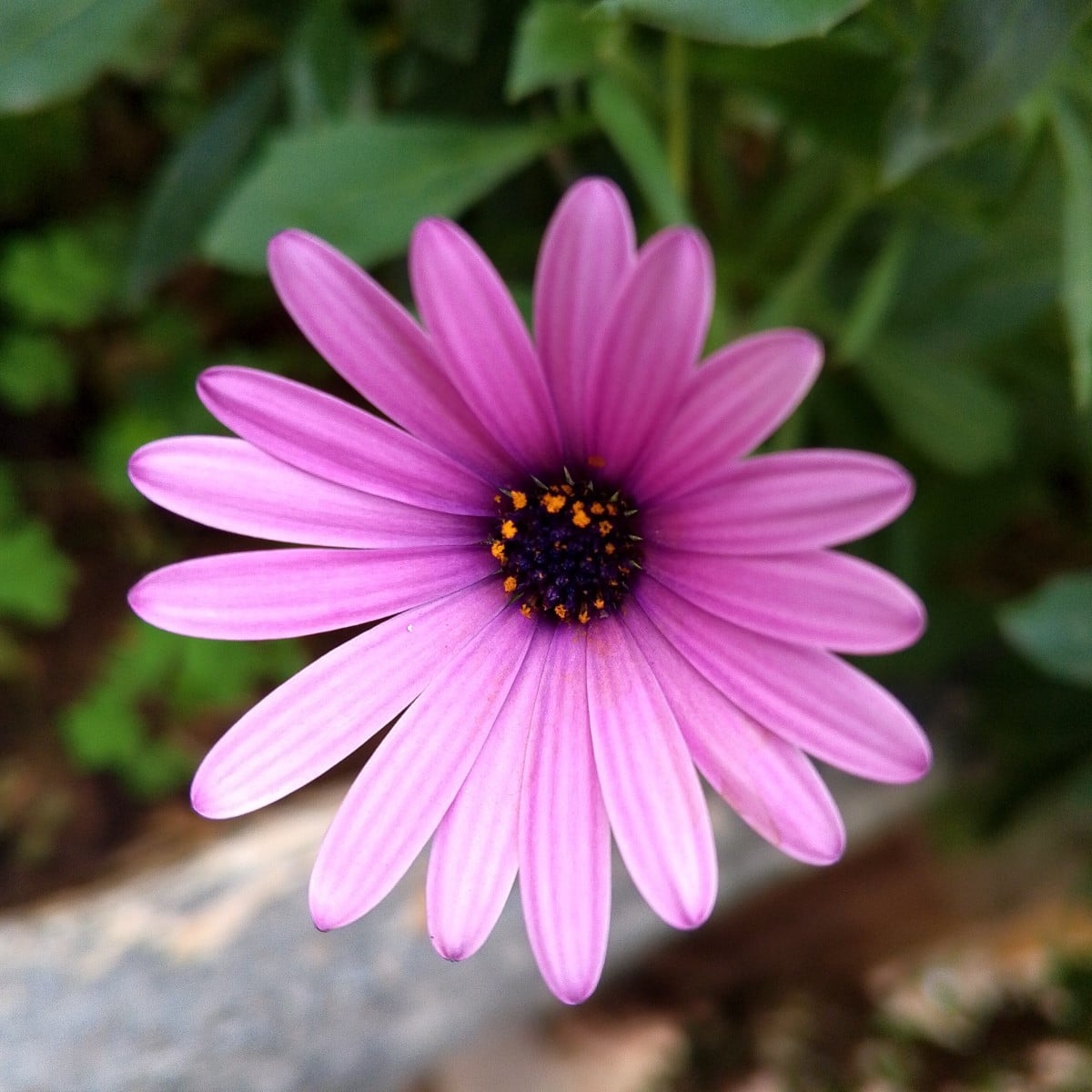
I found this in the street 🌼🌺 i dont know its name


Liked 4 times
Hello folks, Today, after almost a year, I took my turmeric plant out of the flower pot that was on our windowsill. I think it's not bad for a 14x14 pot without any special care. On the left is the mother rhizome, which is also edible.
Show 2 answers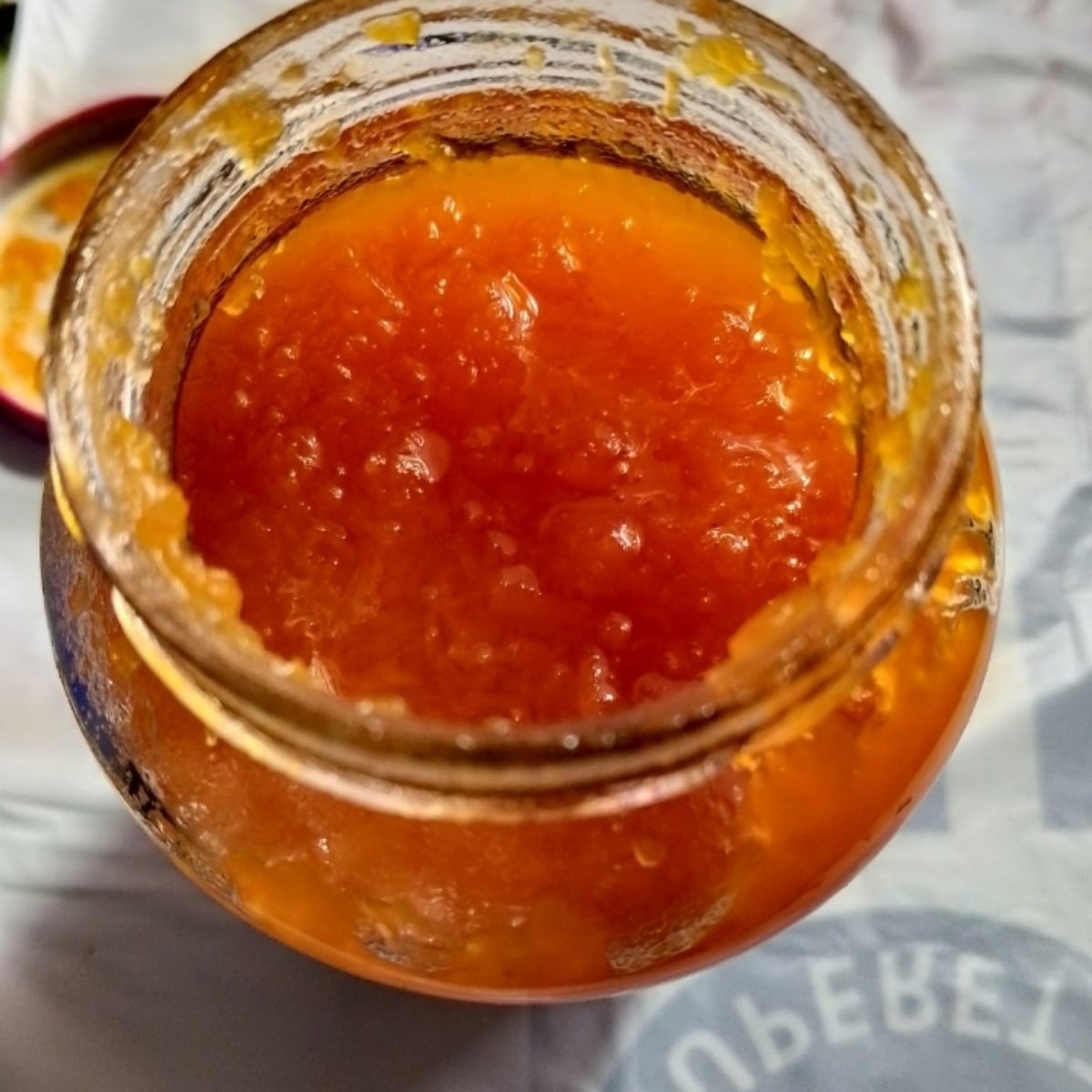
Liked 13 times
Pumpkin jam Cinnamon sticks are added for flavor. It tastes great, do you make pumpkin jam in Europe?
Show 8 answersPopular Articles

Overwintering Parsley: How to Do It Successfully

How to Grow Lettuce in Winter: Varieties, Sowing, Harvesting

Growing Sage Plant: Tips for Sowing and Harvesting

What Herbs Can Be Planted Together?

Create & Design a Permaculture Garden

Overwintering Plants: Tubs, Pots and Raised Beds

Pruning, Fertilizing & Propagating Currants: Care Tips

Pruning Raspberries: How to Do It

Vegetable Garden With Greenhouse: How to Use Greenhouse Effect

Winterizing Beds and the Garden: How to Do It
FAQ
Can I plant peas in a raised bed?
Peas are also suitable for growing in raised beds or on the balcony. Sweet peas are small peas with shallow roots that can also be sown in a balcony box.
A distinction is made between marrowfat peas, sugar snap peas and pal/pea peas. Sweet peas are eaten fresh and with the pod, while paler peas are harvested with ripe peas. Pal peas remain on the plant until the pod is dry.
What do I need to consider when caring for peas?
Peas usually need a climbing support for more stability. However, there are also low-growing sweet peas that do not need a climbing support. You should also mound up the plants to give them more stability as they grow. Peas do not need additional fertilization.
What diseases and pests affect my peas?
Young plants are susceptible to the pea weevil. The pea weevil is on the move in May/June and can infest your pea plants. Crop protection nets can help here. The plants are also occasionally attacked by mildew.